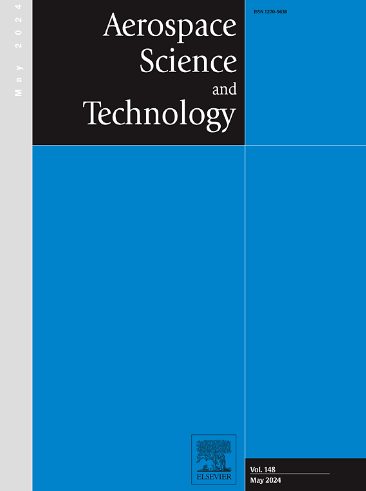A tracking guidance method with funnel scheduling for Mars landing
IF 5.8
1区 工程技术
Q1 ENGINEERING, AEROSPACE
引用次数: 0
Abstract
Powered descent guidance is an enabling technology for extraterrestrial soft landing and reusable rocket recovery. Although the focus of guidance research has tilted towards trajectory optimization recently, feedback tracking control is still necessary to suppress the effects of flight perturbations and uncertainties. In this paper, for the Mars landing mission, the behavior of the powered descent closed-loop system is considered and a guidance method based on funnel (finite-time invariant set) scheduling is proposed. Firstly, the basic model of the powered descent problem is given and its state feedback closed-loop system is constructed. Subsequently, considering the thrust uncertainty as well as saturation constraints, the powered descent funnel model is established, and a point-by-point computation method based on Sum of Squares Programming (SOSP) is presented. On this basis, multiple nominal trajectories and their nearby funnels are solved. The guidance scheme based on funnel scheduling is formulated, which utilizes the funnels to provide a good basis for tracking different nominal trajectories, enhancing the adaptability to the initial state dispersions. The simulation results show that for the thrust deviation considered, the states within the funnel inlet can ensure convergence. The similar level of performance on fuel consumption and terminal accuracy of funnel scheduling guidance with convex programming guidance implies the bottleneck in feedback control performance.
用于火星着陆的漏斗调度跟踪制导方法
动力下降制导是地外软着陆和可重复使用火箭回收的一项使能技术。虽然近来制导研究的重点已转向轨迹优化,但仍需要反馈跟踪控制来抑制飞行扰动和不确定性的影响。本文针对火星着陆任务,考虑了动力下降闭环系统的行为,并提出了一种基于漏斗(有限时间不变集)调度的制导方法。首先,给出了动力下降问题的基本模型,并构建了其状态反馈闭环系统。随后,考虑到推力的不确定性以及饱和约束,建立了动力下降漏斗模型,并提出了基于平方和编程(SOSP)的逐点计算方法。在此基础上,求解了多个名义轨迹及其附近的漏斗。制定了基于漏斗调度的制导方案,利用漏斗为跟踪不同的标称轨迹提供了良好的基础,增强了对初始状态离散的适应性。仿真结果表明,对于所考虑的推力偏差,漏斗入口内的状态可以确保收敛。漏斗调度制导与凸编程制导在燃料消耗和终端精度方面的性能水平相似,这意味着反馈控制性能存在瓶颈。
本文章由计算机程序翻译,如有差异,请以英文原文为准。
求助全文
约1分钟内获得全文
求助全文
来源期刊

Aerospace Science and Technology
工程技术-工程:宇航
CiteScore
10.30
自引率
28.60%
发文量
654
审稿时长
54 days
期刊介绍:
Aerospace Science and Technology publishes articles of outstanding scientific quality. Each article is reviewed by two referees. The journal welcomes papers from a wide range of countries. This journal publishes original papers, review articles and short communications related to all fields of aerospace research, fundamental and applied, potential applications of which are clearly related to:
• The design and the manufacture of aircraft, helicopters, missiles, launchers and satellites
• The control of their environment
• The study of various systems they are involved in, as supports or as targets.
Authors are invited to submit papers on new advances in the following topics to aerospace applications:
• Fluid dynamics
• Energetics and propulsion
• Materials and structures
• Flight mechanics
• Navigation, guidance and control
• Acoustics
• Optics
• Electromagnetism and radar
• Signal and image processing
• Information processing
• Data fusion
• Decision aid
• Human behaviour
• Robotics and intelligent systems
• Complex system engineering.
Etc.
 求助内容:
求助内容: 应助结果提醒方式:
应助结果提醒方式:


